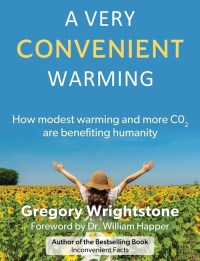 Back in the early 1970s, when there was a scientific consensus that the Earth was cooling and that cooling was not good for the biosphere, scientists were ranking human-generated pollutants in terms of their potential to do harm to the planet. At that time, CO2 was regarded as “the least objectionable or only beneficial addition to the atmosphere from industrial sources.”
Back in the early 1970s, when there was a scientific consensus that the Earth was cooling and that cooling was not good for the biosphere, scientists were ranking human-generated pollutants in terms of their potential to do harm to the planet. At that time, CO2 was regarded as “the least objectionable or only beneficial addition to the atmosphere from industrial sources.”
FIFTY ENVIRONMENTAL PROBLEMS OF TIMELY IMPORTANCE
WEATHER MODIFICATION BY CHANGING CO2 CONTENT OF ATMOSPHERE [p. 48]
American Scientist, January-February 1970, p. 18, “‘Though dire effects on climate of an increase in CO2 have been predicted, they are far from being established. The cycle is not really understood; carbon dioxide may well prove to be the least objectionable or the only beneficial addition to the atmosphere from industrial sources‘”
Then, 40-some years later, Scientific American writers have changed their minds, claiming that the worst human-generated pollution (of all the possible polluting emissions) is carbon dioxide.

Back in the 1970s, a warming planet was good, and a cooling climate was bad. Now, it’s the opposite. Warmth is bad, and cooling is good. And carbon dioxide, instead of being thought of as beneficial, is now considered a pollutant.
Fortunately, though, many modern scientists do not agree that warming and elevated CO2 are the scourge of the biosphere. In fact, there is a growing body of scientific evidence that humans, plants, and animals are much more likely to adapt to and thrive in a warming climate than to a cooling one. For casual observers, this may seem obvious. But for those who are convinced that it is essential to alarm the public about lurking climate catastrophes, good news about warming and elevated CO2 levels are not welcome, let alone worth considering. It is likely considered “anti-science” to even mention that, for example, (a) Gasparrini et al., 2015 “Cold weather kills 20 times as many people as hot weather, according to an international study analyzing over 74 million deaths in 384 locations across 13 countries”, or (b) Donohue et al., 2013 “[T]he 14% increase in atmospheric CO2 (1982‚Äì2010) led to a 5 to 10% increase in green foliage cover in warm, arid environments.” Dramatically reduced mortality rates due to warming, or a greener planet with enhanced crop yields and longer growing seasons due to CO2 rise…do not advance the humans-are-causing-climate-catastrophe agenda. So instead of reporting on them, tendentious journalists and activists for the cause largely ignore the “good news” about global warming and elevated CO2.
So let’s uncover some of these recently published “good news” papers. The below list of 20 new (2016) peer-reviewed scientific papers conclude that (a) modern mortality rates are lower with warmth they are in cooler environments; (b) elevated CO2 ‘dramatically’ increases crop yields, (c) elevated CO2 ameliorates the effects of drought and heat waves, (d) elevated CO2 greens the Earth, (e) elevated CO2 and warming lead to weaker hurricanes and storms and stabilize the climate, and (f) there is no significant evidence linking extreme weather events (hurricanes, floods, droughts fires, tornadoes)… to CO2 changes, but there is (g) evidence that cooling temperatures lead to a more unstable climate.
















